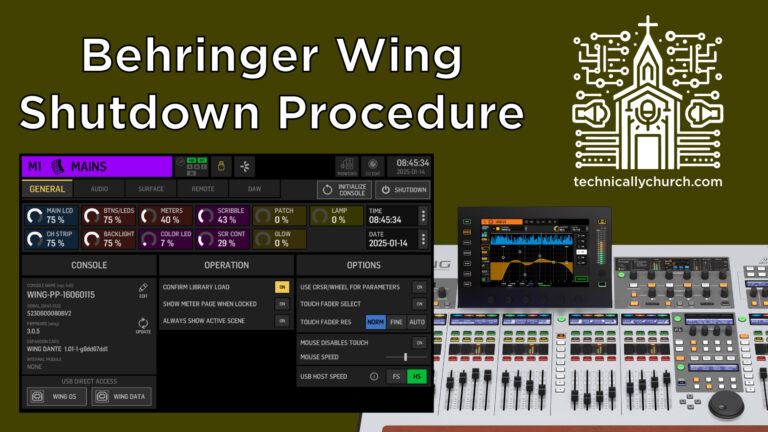Real World Behringer Wing Example: Lead Vocal Snip Settings
Streamlining Live Vocals with Snips on the Behringer Wing
Introduction
The Behringer Wing mixer offers an innovative feature called Snips, which is instrumental in managing complex live sound setups, especially for vocalists. Snips record and save specific changes made during a performance, allowing for easy replication of settings. This article explores how to effectively use Snips for vocal channel management in live music settings.
Understanding Snips Functionality
- Selective Recording: Snips capture only the changes made to the mixer’s settings, not the entire configuration.
- Efficiency: This feature is particularly useful for settings that vary between songs or performers, as it records only the adjustments made during the recording phase.
Practical Application: Managing Vocal Channels
- Scenario Setup: In a typical scenario, you have separate buses for the lead vocalist and background vocalists, along with different effects like delay and reverb.
- Color-Coding Vocalists: For visual clarity, vocalists can be color-coded on the mixer, with different colors representing lead and background roles.
Creating Snips for Vocalists
- Recording Process: Activate the recording mode in Snips, then adjust the vocalists’ assignments to the lead and background buses, add or remove them from effects channels, and change their color coding on the mixer.
- Saving Snips: After making these changes, stop the recording to save the configuration into a Snip.
Using Snips in Live Settings
- Preparation: Prepare individual Snips for each vocalist, representing their role as a lead or background singer for different songs.
- Integration with Shows and Snaps: Incorporate these Snips into the overall show setup, loading them alongside snapshots for each song, ensuring the correct vocal mix and processing for each performance.
Conclusion
Utilizing Snips on the Behringer Wing mixer provides sound engineers with a streamlined approach to managing vocal channels during live performances. This feature simplifies the process of switching roles among vocalists, applying specific effects, and ensuring visual clarity, enhancing the overall efficiency and quality of live sound mixing.





